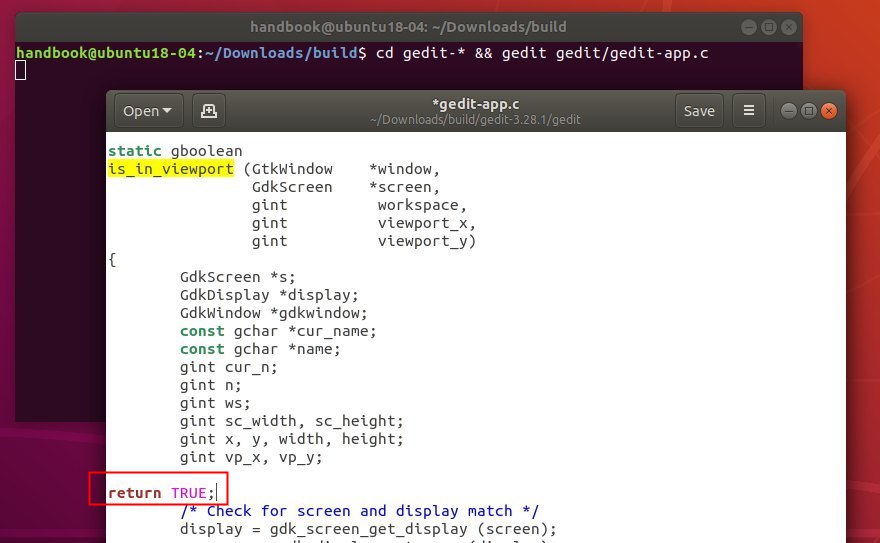
adam diff -u -r codelisting/ChangeLog gedit/plugins/codelisting/ChangeLog - codelisting/ChangeLog 02:59:56.000000000 -0800 +++ gedit/plugins/codelisting/ChangeLog 13:35:42.000000000 -0800 -1,3 +1,8 + Adam Dingle + + * gedit-code-listing-plugin-panel.c: + Minor fix so we can build with a current gedit (2.16.2). Or I can take over as maintainer and check the sources in somewhere so that I (and hopefully others) can continue to work on it. If you'd like to act as maintainer, I can send you patches. I know you haven't worked on this in a year or so.
#Ctags gedit full#
I'm interested in doing some more work on the plugin in the near future to add a few things: - a command to jump to the definition of the symbol under the cursor - navigate forward/back through symbol jump history - general bug fixes / robustness - display full path of tags files in history menu (right now they all just show up as "tags", even if in different directories) - etc.
#Ctags gedit archive#
(Yes, I know that this is only once of several ctags plugins floating around I've looked at a few of them.) Below is a (tiny) patch to your archive which allows the plugin to build in a current gedit (2.16.2). Jesse, I've decided to resurrect your ctags gedit plugin ( ). Subject: Re: resurrecting ctags pluginĮl mar, 28-11-2006 a las 14:19 -0800, Adam Dingle escribió:.Finally, the last command is used to jump back up in the tag stack to the location you initiated the previous tag search from.Re: resurrecting ctags plugin If there are multiple definitions/uses for a particular tag, the tn and tp commands can be used to scroll through them, and the ts command can be used to "search" a list for the definition you want (useful when there are dozens or hundreds of definitions for some commonly-used struct). The second command can be used to search for any tag, regardless of the file that is currently opened.
:max_bytes(150000):strip_icc()/linux-gedit-tabs-a5d46cb993de4654866d8f594f7f82a9.jpg)

The first command is probably the one you will use most often: it jumps to the definition of the tag (function name, structure name, variable name, or pretty much anything) under the cursor. List all of the definitions of the last tag Go to the previous definition for the last tag Go to the next definition for the last tag Or, open any Linux source file in Vim and use the following basic commands: To search for a specific tag and open Vim to its definition, run the following command in your shell: You may see messages like "Warning: cannot open source file '.' : Permission denied" while ctags is building the tags file. To switch back to your original buffer and expand it, use C-x o to switch to it, then C-x 1 to expand. When you're done, instead of jumping back up in the tag stack, close the new buffer ( C-x k). Switch to the new buffer ( C-x o), scroll through the list of definitions to the one that you want, then press Enter to open the file. This will display a list of the tag definitions in another buffer.

In this case, you can run the following two commands to list all of the uses of a given : You'll probably find that for some tags (common structures, for example), Etags finds hundreds or thousands of uses in the code, and jumping through them (with the third command above) to try to find the original definition is useless.

Finally, use the fourth command to jump back up in the tag "stack." Sometimes Etags will find multiple definitions for a given tag when this is the case, use the third command to jump through the possible definitions until you find the one that you want. The second command can be used to search for any tag in the TAGS file, regardless of the file you are currently viewing. The first command is probably the one you will use most often: it jumps to the definition of the tag (function name, structure name, variable name, or pretty much anything). Say yes when prompted to load the really big tags file. The first time you run an Etags command within Emacs, you may have to specify the location of your TAGS file (i.e.


 0 kommentar(er)
0 kommentar(er)
